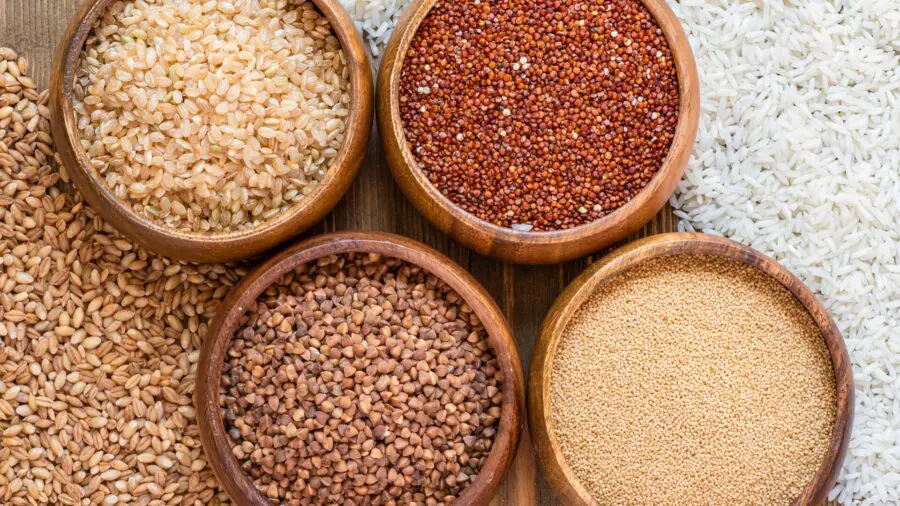Introduction: What Are Ancient Grains?
Long before modern wheat, rice, and corn dominated our plates, ancient grains were nourishing civilizations across the globe. These are grains that have remained largely unchanged for thousands of years, offering rich nutrition and resilience that today’s hybrid crops often lack.
Unlike heavily processed modern grains, ancient grains retain their original nutrient profile, fibre, and flavour, making them a powerful part of a whole-food, gut-friendly diet.
With a renewed interest in traditional foods and plant-based nutrition, these grains are making a big comeback in health-conscious kitchens, restaurants, and clinical nutrition plans.
What Qualifies as an “Ancient Grain”?
Ancient grains are grains or pseudo cereals that have been cultivated and consumed for centuries without significant genetic modification. They’re typically:
-
Whole (minimally processed)
-
Nutrient-dense
-
Naturally gluten-free (most varieties)
-
Rich in history and tradition
Popular Ancient Grains and Their Health Benefits
1. Millets (Pearl, Foxtail, Little, Barnyard, Kodo)
Used traditionally in India and Africa, millets are rich in:
-
Fibre (supports digestion, gut health)
-
Magnesium and iron
-
Low GI (great for blood sugar control)
-
Gluten-free and easy to digest
Millets are now being recommended for diabetes, weight loss, and gluten intolerance.
2. Amaranth (Rajgira)
A tiny but mighty seed, amaranth is technically a pseudo cereal and:
-
Packed with complete protein (contains all 9 essential amino acids)
-
High in calcium, making it bone-friendly
-
Rich in antioxidants and fibre
Excellent for vegetarians, growing children, and postmenopausal women.
3. Quinoa
Although native to South America, quinoa has found a home in global superfood lists:
-
Complete plant-based protein
-
Rich in B vitamins, iron, magnesium
-
Supports heart health and blood sugar control
-
Gluten-free and easy to cook
Perfect as a rice alternative or in salads and soups.
4. Sorghum (Jowar)
Popular in Indian cuisine as rotis, jowar is:
-
High in resistant starch (a prebiotic for gut bacteria)
-
Excellent for weight management
-
Gluten-free and suitable for IBS or wheat allergy
Jowar is increasingly seen in gluten-free flour mixes and breakfast cereals.
5. Farro (Emmer Wheat)
One of the oldest wheat varieties, farro is:
-
Rich in fibre, protein, and zinc
-
Has a slightly chewy texture and nutty flavour
-
Not gluten-free, but less processed than modern wheat
Farro is ideal for Mediterranean-style grain bowls.
6. Teff
Native to Ethiopia, this super-tiny grain:
-
Is a great source of iron and resistant starch
-
High in calcium great for bone strength
-
Used to make injera, a traditional Ethiopian flatbread
Teff is a strong addition to endurance athlete diets.
Why Ancient Grains Are Worth Rediscovering
1. Nutrient Density
Ancient grains are naturally rich in fibre, vitamins, minerals, and antioxidants—nutrients often lost in modern, refined grains.
2. Supports Gut Health
Their high fibre and prebiotic content supports digestion, prevents constipation, and nurtures a healthy gut microbiome.
3. Sustainable Agriculture
Ancient grains are resilient crops, often needing less water and fewer pesticides. Their cultivation supports biodiversity and climate-resilient farming.
4. Versatile and Wholesome
They can be used in:
-
Rotis, upma, porridge, khichdi
-
Baking (muffins, breads)
-
Energy bars, laddus, and salads
They also add texture and depth to meals without overprocessing.
How to Add Ancient Grains to Your Diet
-
Start with 2–3 servings/week, rotating different grains
-
Replace modern staples:
-
Use jowar rotis instead of wheat
-
Try millet khichdi instead of rice
-
Add quinoa to salads or soups
-
-
Use multi-millet flours in dosas, pancakes, or chillas
-
Opt for homemade amaranth or ragi ladoos as healthy snacks
Who Should Include Ancient Grains?
✅ People with gluten sensitivity
✅ Individuals with diabetes or metabolic issues
✅ Children and elderly needing calcium & fibre
✅ Fitness enthusiasts and plant-based eaters
✅ Anyone looking to eat more mindfully and sustainably
In our pursuit of modern nutrition, we’ve forgotten the wisdom of our ancestors. Ancient grains like millets, amaranth, jowar, and quinoa offer a powerful blend of tradition, taste, and health—right from our soil to your plate.
By rediscovering and embracing these grains, we’re not just improving our health—we’re also honouring biodiversity, supporting farmers, and reviving forgotten culinary heritage.



